For many users, the abbreviation for technology and smartphone screen resolution is perplexing. What do all these acronyms mean? This article will tell you what types of screens are, and what is the difference between different resolutions.
Screen resolution
One of the main parameters when choosing a smartphone is screen resolution. The higher it is, the better. Screen size is indicated in inches, the number of vertical and horizontal pixels (how much information it can display), and the density of pixels per inch.
If you know the screen size, you can calculate the number of pixels per inch. This parameter is called pixel density – PPI.
As the minimum resolution, consider HD (1280 x 720 pixels), since in modern gadgets there is usually no lower one. Let's also pay attention to the characteristics of the screen brightness.
| Resolution | Pixels (horizontal and vertical) | Name | Examples of smartphones |
|---|---|---|---|
| True 4K | 4096 x 2160 | 4K, Cinema 4K, True 4K | not yet |
| 4K Ultra HD | 3840 x 2160 | 4K, Ultra HD, 4K Ultra HD | Sony Xperia XZ |
| 2K | 2560 x 1440 | 2K | HTC 10, Nexus 6P, Moto Z, Galaxy S7, LG V20 |
| 1080p | 1920 x 1080 | Full HD, FHD, HD High Definition | OnePlus 3, Sony Xperia X, Huawei P9, iPhone 7 Plus |
| 720p | 1280 x 720 | HD, High Definition | Moto G4, Galaxy J3, Xperia M4 |
to the content
HD
HD translates to High Definition, high definition. It is 1280 x 720 pixels. It doesn't matter what screen size; if the resolution is that, it's an HD screen.
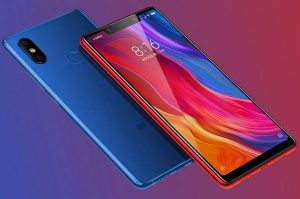
The smaller the HD screen, the higher the pixel density. In theory, this means a better picture. Different HD screens can display different images. On a 5 “screen, the quality will be one thing, on a 10” screen, another. Screens are measured diagonally and may have different aspect ratios.
On a 4.3-inch screen, the HD pixel density will be 342 ppi. On a 4.7-inch screen, the pixel density drops to 312 ppi, but in both cases it's HD. Apple called 300 ppi a sufficient value, above the human eye ceases to distinguish individual pixels when viewed from a certain distance.
to the content
Full HD
Full HD The resolution is most often found in smartphones released in the last year. Although, in some devices, 2K (QHD) screens are increasingly found. Oppo Find 7 and LG G3 were the first of these.
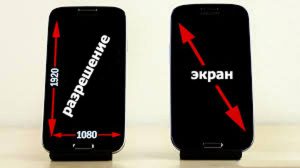
The resolution Full HD is 1920 x 1080 pixels. Again, the pixel density depends on the diagonal of the screen. A 5-inch screen gives a density of 440 ppi, while 5.5 inches means 400 ppi.
to the content
QHD, Quad HD, or 2K
QHD stands for Quad HD, which is 4 times the resolution of standard HD. A screen of the same size can accommodate 4 times more pixels than HD resolution. Namely 2560 x 1440 pixels. The 5.5-inch display has a pixel density of 538 ppi. The same Full screen has a pixel density of 400 ppi.
Sometimes permissions are denoted differently. HD is written as 720p, Full HD 1080p, etc. QHD is called 2K because the maximum value is over 2000 pixels. This can be confusing for users as it would be more logical to name it 2.5K.
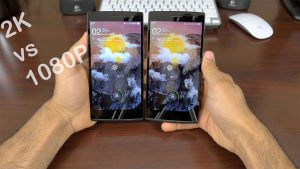
Many smartphones from Samsung, Motorola, Huawei and other major manufacturers these days have 2K screens
to the content
4K, or Ultra HD
As with 2K, the name 4K comes from the higher resolution value. But in fact, there are not 4000, but 3840 pixels. Thus, although the two terms are used interchangeably, they actually mean a little differently.
Ultra HD is 3860 x 2160 pixels and 4K is 4096 x 2160 pixels. Both of these options are often cut to 2160p. The difference in the number of pixels is small, but it is there. One of the first smartphones with 4K screen was Sony's Xperia Z5 Premium, which featured Ultra HD resolution on a 5.5-inch screen.
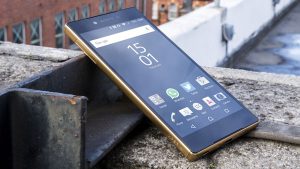
Sony calls it 4K, but it's actually Ultra HD. The Sony Z5 Premium has a pixel density of 806 ppi, far more than any other smartphone and far more than most users need.
to the content
Future trend
Smartphone screens are getting larger, but manufacturers are in no rush to use 4K resolution. Unless Sony chose this option in the Xperia Z5 Premium and XZ Premium.
Instead, 2K panels are increasingly being used. This allows less power consumption than higher resolutions. Modern smartphones already cannot boast of a good battery life, manufacturers do not want to spoil it even more. Unless Sony has released another smartphone – the Xperia XZ3 Premium model.
to the content
Display types
There are many types of displays for mobile devices: LCD, OLED, AMOLED, Super AMOLED, TFT, IPS and some more rare, like TFT – LCD. On devices from the average price, IPS panels LCD are often found. What do all these acronyms mean? Let's analyze further.
to the content
LCD, TFT, IPS
LCD (Liquid Crystal Display) – liquid crystal display. As the name implies, it is based on liquid crystals, behind which there is a backlight. Their low price makes these screens popular among manufacturers of smartphones and other devices.
The screens LCD are usually highly visible in the sun as they are illuminated from the inside. True, they do not have the same color accuracy as non-backlit screen types.
Both TFT and IPS displays are used on smartphones. TFT (Thin Film Transistor) – thin film transistor. This is an advanced version LCD with an active matrix like AM in AMOLED. Each pixel has a separate connection to the transistor and capacitor.
TFTs are favored by relatively low production costs and increased contrast compared to traditional ones LCD. At the same time, TFT screens consume more energy compared to other types LCD, they have worse viewing angles and color rendering. Because of this, and because of the decreasing price of other technologies, TFT screens are rare in modern smartphones.
IPS (In-Plane Switching). This is a further development of TFT technologies LCD. Here the color rendition and viewing angles are better. It uses two transistors per pixel, and the backlight is more powerful. This increases power consumption, but is still less than TFT panels.
There are other options like IPS-NEO. This is the name of a proprietary technology from JDI that supposedly eliminates backlight leakage, but the principle of operation is generally the same as for other IPS panels LCD.
to the content
AMOLED
AMOLED (Active Matrix Organic Light-Emitting Diode) – an active matrix based on organic LEDs. It sounds complicated, but it really isn't. Active matrix is also used in TFT LCD and OLED is another term for thin film technology.
OLED is an organic material that emits light when a current passes through it. Unlike the panels LCD, where there is a backlight, the panels OLED are always off, unless a current is applied to individual pixels. This means that screens OLED have purer blacks and use less power when the screen is dark. On the other hand, bright images on screens AMOLED use more power than screens LCD. Production of panels OLED is more expensive compared to LCD.

Since the black pixels on screens OLED are off, the contrast is higher than on LCD. They also have a higher refresh rate, but less visibility in the sun. There are problems with screen burnout and diode degradation as they are organic.
On the other hand, the panels AMOLED can be made thinner than LCD, since they do not need a highlight layer. They can also be made flexible.
to the content
What's the difference between OLED, AMOLED and Super AMOLED?
OLED stands for Organic Light Emitting Diode (organic LEDs). The screens OLED are composed of thin films of electroluminescent material. They emit light and do not require backlighting, reducing power consumption. Displays OLED are often referred to as AMOLED when used on smartphones and TVs.
AM stands for “active matrix”, as opposed to passive matrix OLED (P – OLED), which is less commonly used in smartphones.
Super AMOLED refers to similar Samsung screens. At first they were on flagship smartphones, now they got to cheap ones. Like IPS LCD, Super screens AMOLED are an improvement over simple screens AMOLED. The touch layer is built into the screen itself, not on top of it.
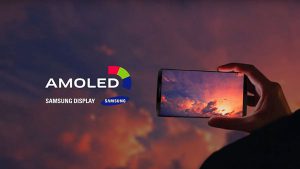
As a result, Super panels AMOLED are better visible in the sun than simple panels AMOLED and use less energy. Samsung panels are considered the best.
to the content
Retina
Another marketing name, this time from a company Apple. Retina displays do not have certain characteristics, except that they need to be higher than the minimum resolution. This resolution prevents the human eye from seeing individual pixels, and the pixel density is over 300 ppi. However, Apple measures pixel density differently from other manufacturers.
Measurement varies with screen size and resolution. The concept of Retina has been promoted since the days of iPhone 4 with a resolution of 960 x 640. It used an IPS screen LCD 3.5 inches, pixel density 330 ppi.
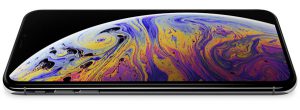
These days on Android screens under 6 inches with QHD resolution, pixel density reaches 400-500 ppi. Because of this Apple, it was necessary to reconsider the opinion that 300 ppi is sufficient. iPhone 6 Plus with Full HD has a pixel density of 401 ppi. The iPhone 7 and iPhone 7 Plus have pixel densities of 326 and 401 ppi, respectively. On iPhone XS and XS Max, this value is 458 ppi.
to the content
Displays of the future
Smartphones are gradually “matched” to 4K screen resolution. Monitors and TVs can reach 8K (7680 × 4320) levels. This year, the RED Hydrogen One smartphone with a holographic screen was presented. The resolution here is 2K, but “4V” content could be revolutionary.
Micro LED – This is a new technology that is still in its infancy. But it has the potential to become ubiquitous in the future. Micro LED screens act like OLED but are thinner. They are composed of inorganic semiconductors like gallium nitrite. There are also light emitting diodes here, smaller compared to the diodes in the panels OLED.
Micro LED backlighting is unnecessary, and neither is a polarizing filter. The glass layer above the panel can be made thinner. The brightness per power unit, which indicates the efficiency of the displays, is better than the OLED and LCD panels. With the same brightness, the Micro LED screen consumes 2 times less energy compared to OLED and often even less. Very small diodes allow for higher resolution on the same surface. With such screens, you can create a smartwatch with 4K resolution. Micro LEDs are not subject to fading like panels OLED.
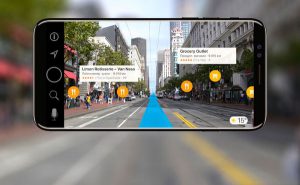
The main disadvantage of Micro LED at the moment is the price. The production is complex, the percentage of rejects is high. There are probably no production lines for Micro LED yet. All this does not contribute to lower prices. Experts expect the first custom products with such screens to arrive in 2019 and 2020. Apple has been investing in the development of this technology since 2014. Perhaps Apple Watch will be the first.
to the content
Which type of screen is best?
As you can see, different types of screens can be used by different manufacturers. AMOLED doesn't always mean Samsung, and Retina doesn't always mean Apple, although other companies don't use the term. IPS screens LCD for iPhone produces LG and Samsung for iPad. Not all Samsung devices have bezels AMOLED. It's not about which screen is the absolute best. Each has pros and cons, and you need to consider their cost.
It is necessary to pay attention not only to the technical characteristics when comparing the screens of two smartphones, but to the image quality (color rendering, brightness, view of the sun on the street). It is impossible to appreciate two screens on paper. You need to see with your own eyes colors, saturation, brightness and contrast, viewing angles, etc.
You also need to take into account your own application scenario. If you look at the screen on the couch at night and sit in front of the computer monitor all day, good “visibility” of the panel LCD is not too important for you. If you are often outdoors, LCD is better.
If you want the longest runtime, the richest colors and the best contrast, screens AMOLED are your choice.
